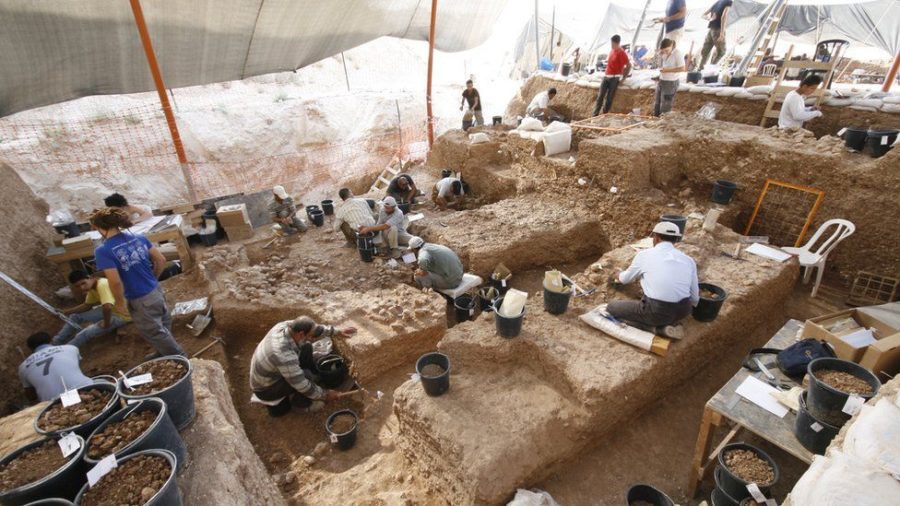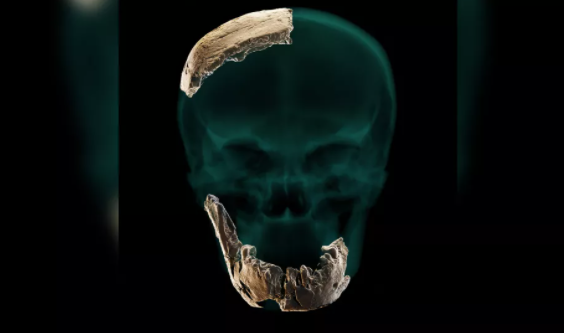The human bones found in Israel are unique as they seem to have had large teeth but no chin.
Researchers say the unknown group of humans could possibly be the last survivors of a once very dominant group in the Middle East

The following written content from Charles Q. Choi
A previously unknown group of ancient humans discovered in Israel may have coexisted alongside modern humans and Neanderthals, interbreeding with both groups and sharing knowledge and tools with them as well, new studies find.
The new fossils were unearthed in 2010 near the city of Ramla in central Israel, after quarrying in the mining area of the Nesher cement plant revealed what is now known as the Nesher Ramla prehistoric site. After digging down about 26 feet (8 meters), the researchers found stone tools and human bones, as well as large quantities of animal bones, including the remains of horses, deer and extinct cattle known as aurochs.
It took scientists a better part of a decade to figure out what they had. “People think it’s simple to quickly analyze fossils, but it takes a lot of time,” Israel Hershkovitz, a paleoanthropologist at Tel Aviv University and lead author of one of the two studies on the discovery, told Live Science. “Once you find the fossils, you have to clean them and reconstruct them and then collect comparable material around the world to properly understand them.”
After all that work, the researchers identified the Nesher Ramla bones as belonging to a new type of Homo, or member of the human family tree, previously unknown to science. They dated the fossils and found them to be about 120,000 to 140,000 years old.
The Nesher Ramla bones share features with Neanderthals, especially in the teeth and jaws, but these mystery humans had skulls more closely resembling those of more archaic human lineages, the scientists noted. And this new type of Homo is very unlike modern humans, possessing a completely different skull structure, no chin and very large teeth.
After comparing the Nesher Ramla Homo bones with other fossils previously found in Israel that have baffled scientists for years — such as 160,000-year-old bones from Tabun cave, 250,000-year-old remains from Zuttiyeh cave and 400,000-year-old specimens from Qesem cave — the team “realized they all belonged to the same group,” Hershkovitz said. “They were a very large population in the region from at least about 400,000 years ago to about 100,000 years ago.”
Hebrew University of Jerusalem archaeologist Yossi Zaidner and his colleagues found stone tools linked with the Nesher Ramla bones, such as points that could later be hafted onto shafts to form spears or arrows. The specific way of crafting these artifacts was previously seen only among modern humans and Neanderthals.
These new findings suggest that two different groups of humans lived side by side in the Middle East for more than 100,000 years between about 100,000 and 200,000 years ago — the Nesher Ramla people, who lived in the region starting about 400,000 years ago, and modern humans, who arrived there about 200,000 years ago. They likely not only shared knowledge and tools but also interbred — fossils previously unearthed in Skhul and Qafzeh caves in northern Israel that date to between 80,000 and 120,000 years ago may represent groups of intermixed modern-human and Nesher Ramla lineage, the scientists noted.
When the scientists compared these fossils with others around the world, they found that the nearest match came from the Sima de los Huesos, or “Pit of Bones,” an underground cave in the Atapuerca Mountains in northern Spain, Hershkovitz said. The nature of the bones there are hotly contested, potentially sharing similarities with modern humans, Neanderthals and the mysterious extinct human group known as the Denisovans. Read more from Live Science





